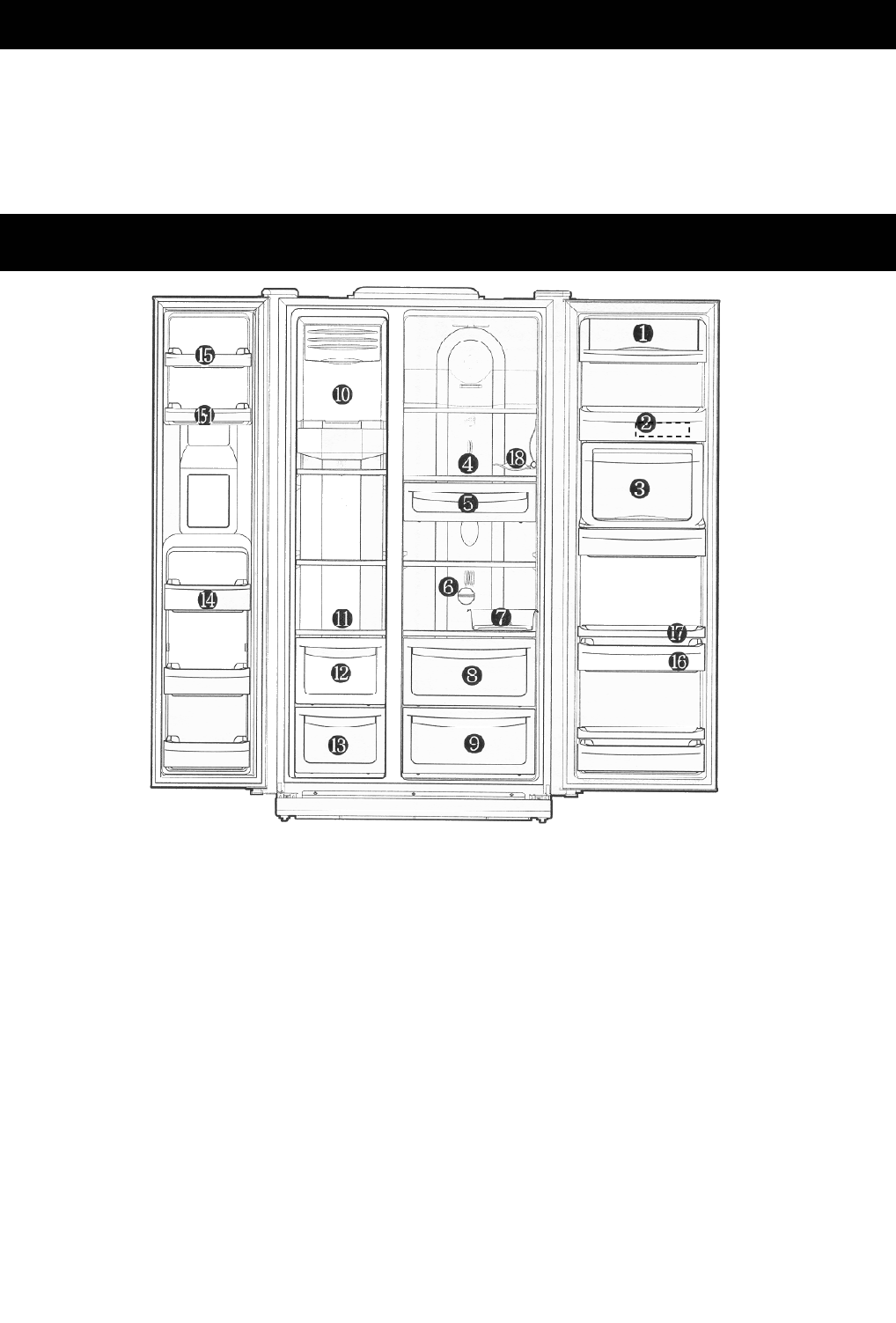
Page 6
1. The dairy compartment is ideal for storing butter and cheese.
2. Small refrigerator door storage bins offer convenient storage space for condiments and small jars.
3. Externally accessible compartment for the storage of frequently used beverages, water and cans.
4. Refrigerator shelves are made of strong tempered glass and may be used for storing everyday
foods.
5. The cold storage drawer is for the short term storage of meat or fish.
6. The crisper temperature selector knob is used to select Chilled or Vegetable modes. See page 11.
7. Removable egg caddies offer convenient egg storage.
8. The top crisper may be used as a chilled storage facility.
9. Crispers are specifically designed for the storing of fruit and vegetables.
10. Ice trays and a storage container provide a ready supply of ice cubes.
11. Freezer shelves are made of strong tempered glass and may be used for storing frozen foods.
12. The top freezer drawer is ideal for storing dried foods for an extended period.
13. The bottom freezer drawer is for storing meat, poultry and fish for long periods.
14. Freezer door storage bins are used for storing items that need to be readily accessible .
15. Do not store ice cream or foods requiring a long storage period in the topmost bin.
16. Refrigerator door storage bins offer convenient storage space for milk, bottles, and cans.
17. Bottle retainers prevent tall bottles from falling when the door is opened.
18. Hinged, fold-out wine bottle support.
Interior parts identification
Refrigerator levelling and door adjustment
Adjusting the doors
• If the floor is uneven, the refrigerator must be levelled and the doors aligned. The refrigerator
should lean slightly backwards as this will ensure that the doors close properly.
• Insert a flat tip screw driver into the left front levelling foot and turn it. Clockwise will raise the
unit and anti-clockwise will lower it.
• Repeat the procedure , turning the right hand levelling foot until the unit stands level and the doors
are aligned.


















